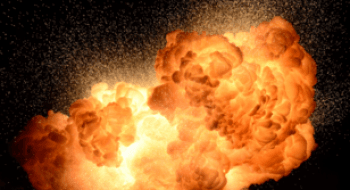
The pyrotechnic articles shall conform to the European Agreement Concerning the International Carriage of Dangerous Good by Road (ADR), to be allowed to transport them on road. The ADR class defines the hazardous class of handling and transporting of the particular pyrotechnic article. These regulations are updated every two years appropriately to the technical advancement.
Test O1 is used to obtain the classification or exclusion of solid materials (e.g. mixture of ammonium nitrate and dolomite powder); detergent containing an oxidizing disinfectant) according to Class 5.1 of the ADR or exclusion from it. The classification procedure must be completed before the product is offered for delivery.
During this test we examine the effect of the (solid) material on the combustion rate and intensity of the combustible material while the two materials are thoroughly mixed. We also check for the occurrence of spontaneous inflammation. The combustion characteristics of the mixture are compared with the combustion characteristics of a suitable mixture of potassium bromate and cellulose as a reference.
Based on the results of the test performed, a decision can be made as to whether a solid material is an oxidizing substance of subclass 5.1 and, if so, whether it should be assigned to packing group I, II or III.
On the basis of the test report issued, the competent authority shall make the appropriate classification
Testing of materials and preparation of expert reports based on the test results. During the test, the detonation properties of the materials are analyzed. Based on successful test results, the substance becomes a candidate for exclusion from Class 1 of the ADR. The question to which the test answers is “Is the substance too insensitive for inclusion in the class of explosives (Class 1)?”
